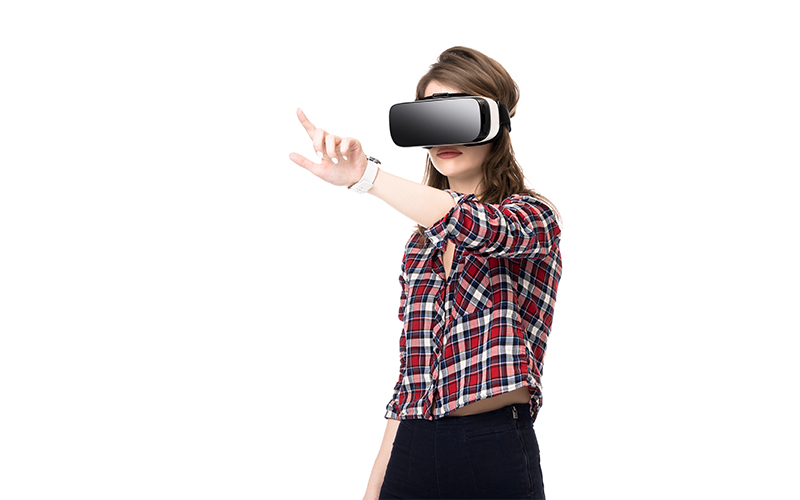DIGITAL INTERACTIVE SERVICES
How is hyper-personalization leading to customer delight?
Personalisation is a critical path through which brands and businesses forge and enhance relationships with their customers. personalised offers, services and incentives differentiate Customer Experience (CX).
Personalisation practices are used to attract, engage, and convert leads to potentially paying customers. Today’s customers constantly expect more. They don’t hesitate to switch loyalties if they are getting what they want, in the blink of an eye.
Hyper-personalisation is an evolution in personalised marketing. It uses artificial intelligence and real-time customer data to personalise products and services making interactions hyper-relevant to them.
What is hyper personalisation?
Today’s customers want to be discovered, have instant access to information through every channel and have their issues addressed by products or services based on the data they gather.
Hyper personalisation combines data analytics and machine intelligence algorithms to derive insights around user behaviour. It then applies predictive analytics to uplevel user interaction and experience.
It differentiates:
- Engagement By following and engaging with customers on all channels by leveraging diverse customer data such as browsing history, sensibilities, location, and preferences to deliver bespoke experiences.
- Relevance and Context By knowing a customer beyond their interaction with a product or service offerings by examining, merging, and analysing data across various points of interaction for a customer, within and outside of the product offering, to get subtle insights into behaviour and preferences, to deliver personalised products and solutions.
- Trust By providing a combination of digital and personal interactions to gather data and build trust with the customer using empathy and active listening.
Many hyper personalised services respond in near real time, as a user interacts with a product or service. Let us look at an example scenario. A person has ordered a parcel from an e-commerce portal. This person then leaves home to work from a café. Through location tracking services, the e-commerce portal and delivery service, exchange information to ensure package delivery at the café. The customer didn’t have to rush home to receive the package. The result is customer delight, which is what assures customer loyalty, referrals and repeat business.
Hyper personalisation is a highly detailed process that gathers data from multiple customer touchpoints and channels. It goes beyond market segmentation and focuses on “one customer”. Using hyper personalisation, businesses can develop a “per-customer” strategy to intensely customise solutions, products & services.
Difference between Hyper Personalisation and Personalisation
- Data collection and analysis Personalisation only uses general, broad-based customer data and relies on demographic information like name, gender, location, age and education levels to segment customers into groups. Hyper-personalisation focuses on individual human behaviour to enhance customer experience.
- Deep customer understandingHyper-personalisation uses predictive analytics to predict customer behaviour and outcomes. Using the same example of package delivery based on the customer location, an enhanced experience would be showing the customer offers of similar products available in the vicinity of the café, timed to catch the customer’s attention.
- Minimise customer friction, maximise experience Tailoring individual customer journeys by analysing, predicting and intelligently fulfilling customer needs in line with their journey is the goal of hyper-personalisation. Personalisation only focuses on a segment of customers and not individuals.
- Technology Personalisation relies on segmentation and automation tools whereas hyper-personalisation uses machine learning tools and complex customer journey analytics.
Hyper-personalisation applications
Spotify’s recommendation engine ensures, in real time, that you don’t miss out on your favourite music wherever you are.
Netflix uses recommendation algorithms based on the viewers’ choice to recommend films or top picks with a “for you” personalisation.
Benefits of hyper-personalisation
- Customer experience focus Real time analysis and insights from each step of a customer’s journey become highly actionable for product development and cross-functional teams that enable delivery of superior and frictionless experiences.
- Increased revenueCustomers are more likely to do business with companies that provide a unique and personalised experience.
- Multi-channel and timing Meeting the customer through their preferred channel with timely, customised messages resonates very well with individuals.
- Meaningful conversations Customers appreciate individual conversations. Using a combination of live chat and agents who know a customer’s behaviour and history provide the business with the means of delivering meaningful customer experiences.
- Brand loyalty and customer lifetime value Increase in both are highly likely with hyper-personalisation.
Mindful considerations
With the amount of data collected, companies must consider:
- Data Privacy Companies need to ensure that they can ethically collect and process data while keeping compliance and regulations in mind.
- Intrusion and customer relationship: There is a fine line between data access with permission and without. Companies using customer preferences and behaviour to hyper personalise messages and recommendations can leave customers feeling uncomfortable if there is no clarity about the source of data. The decision of using anonymous v/s permission-based modes of data gathering should be thoughtfully planned so customers don’t perceive hyper personalisation as intrusive, and the business loses customers.
Data strongly indicates that customers are more likely to make a purchase when they receive personalised messages and triggers. Hyper personalisation can address these aspects and if done correctly can significantly improve customer experience and drive business growth by creating life-long customers.
*For organizations on the digital transformation journey, agility is key in responding to a rapidly changing technology and business landscape. Now more than ever, it is crucial to deliver and exceed on organizational expectations with a robust digital mindset backed by innovation. Enabling businesses to sense, learn, respond, and evolve like a living organism, will be imperative for business excellence going forward. A comprehensive, yet modular suite of services is doing exactly that. Equipping organizations with intuitive decision-making automatically at scale, actionable insights based on real-time solutions, anytime/anywhere experience, and in-depth data visibility across functions leading to hyper-productivity, Live Enterprise is building connected organizations that are innovating collaboratively for the future.






